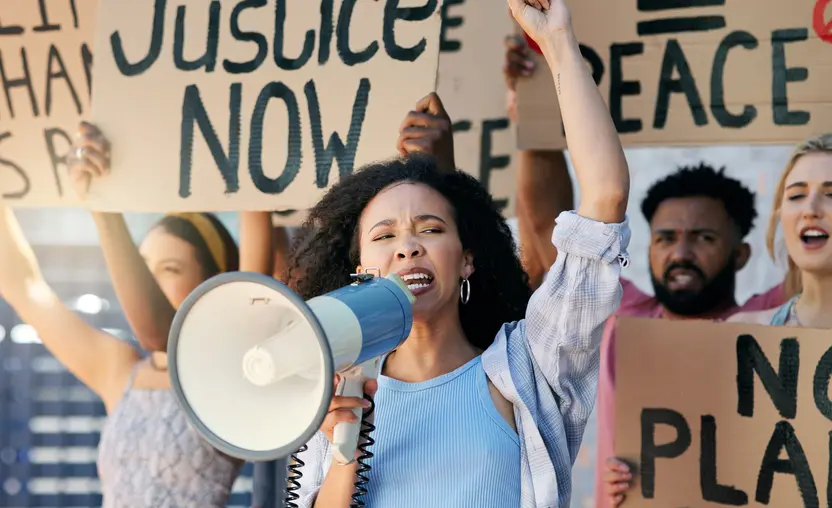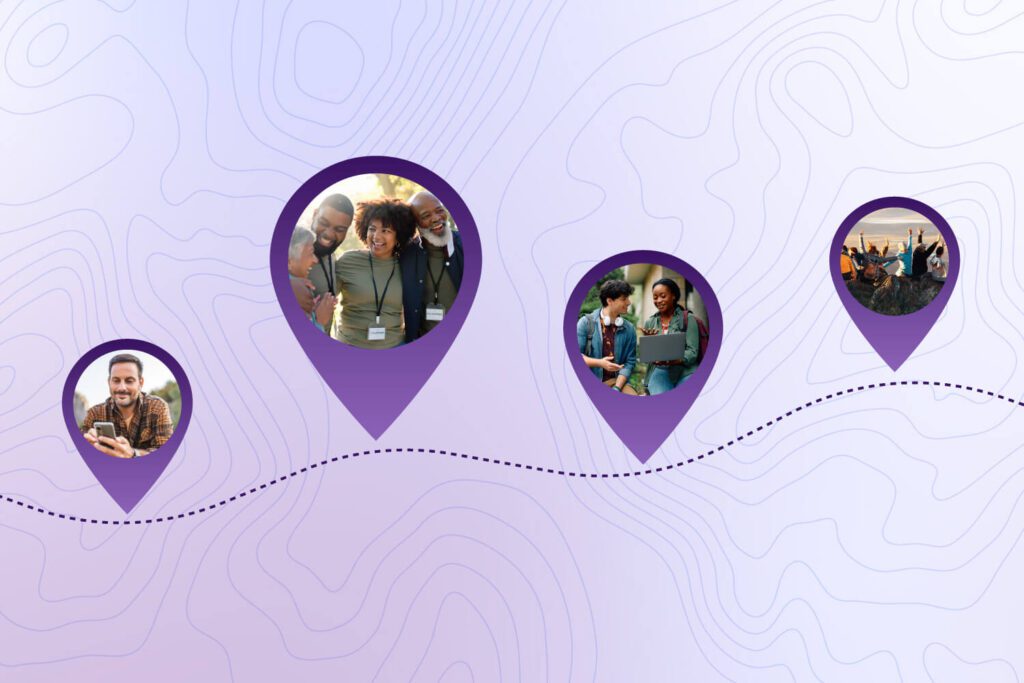Thursday Thoughts: Engaging advocates all year-round

If your nonprofit organization does advocacy work, you know that there is a consistent cycle of crisis management that leads to periods of downtime after the immediate crisis is resolved. To build an efficient program with this boom-and-bust system, nonprofit organizations and advocacy groups need to focus on retaining volunteer advocates year-round. By maintaining engagement between campaigns, you can complete work more consistently and make a deeper impact that’s in alignment with your long-term vision and goals.
We asked our partners to share some ways organizations doing advocacy work can consistently engage supporters and keep them ready to take action, even outside of crisis moments. Here’s what they said.
MESG Marketing
Mary Getz, principal and founder
Through integrated multichannel campaigns and intense optimization based on audience and key performance metrics, MESG Marketing helps nonprofits raise more money, grow and cultivate constituent bases, drive advocacy actions, and develop their online brands.
Learn how to improve your advocacy engagement with advice from Mary Getz, the agency’s principal and founder:
When an issue is breaking there is a flurry of activity. But what sometimes isn’t captured in a breaking moment is that most of these are the result of weeks, months, or years of steady work to create that singular moment.
Advocacy is a long-term calling. It is great when we get wins and can celebrate them, and it’s tough when we take a loss and have to re-group and press onward. So, working with our community to define our short-term campaign goals as well as our long-term vision is critical. This can be done through education as well as action. For example, an action alert message to legislators doesn’t have to be about a specific piece of legislation—it could be educating them or sharing a resource. The goal is to move your position forward while engaging your supporter audience.
Raise the Roots
Brandon Fuller, chief strategist
Raise the Roots is a digital agency providing nonprofits and small businesses with expert digital strategy and support to raise awareness, voices, and money. Their chief strategist, Brand Fuller, shared this insight into engaging advocates between campaigns:
For starters, we always encourage partners to go ahead and create as much content as possible at the start of an advocacy campaign to ensure copyediting, reviews, approvals, and production can happen all at once. That content might include the initial email, multiple reminder emails, a thank you message with social sharing opportunities, an update message, etc. This will allow you to extend that advocacy campaign as long as possible without running the approval gauntlet multiple times.
When advocacy campaigns are quiet, consider other engaging advocacy content that can be written and approved in advance to ensure advocates are still opening and clicking your messages:
- Flash poll: Create a one-question poll that is irresistible to advocates, such as “Which of the following should be a higher priority? Protecting the environment or cutting taxes for billionaires?”
- Video updates: Ask a campaign director to record a short video outlining the most recent status of a campaign and what advocates can expect next.
- Super advocate acknowledgment: For advocates who have taken multiple actions in recent months, acknowledge their contributions with a badge they can share on social media or a discount code to your eCommerce shop.
- Proclamation requests: It’s easy to generate proclamations from cities, counties, and states declaring a specific day or month in honor of a cause or group. Ask advocates to send proclamation requests to their local leaders.
- Advocate training: Host a webinar or record a training video that outlines the basics of grassroots advocacy and why it’s so important.
- Advocacy prep: Encourage advocates to find and follow their elected officials online to stay aware of new legislation, town hall meetings, and other opportunities for direct engagement.
- Surveys: Learn more about your advocates and potentially identify grasstops advocates in your ranks by sending short surveys asking about their grassroots advocacy experience, connections, and more. Find out what other groups they support to better target future online acquisition efforts.
- Legislator Q&As: Elected officials are eager to get their faces in front of voters. Contact legislative offices and ask if the legislator would be willing to record a short video answering three or four questions about the legislative process, pieces of legislation, the importance of public input, and more. Share the videos with advocates to bring them close to the lawmaking process.
Rubenstein Impact Group
Brian Rubenstein, founder
Rubenstein Impact Group helps nonprofit organizations and companies drive greater engagement with their audiences—volunteers, members, employees, customers, and partners—to deepen relationships, run successful campaigns, and strengthen their brands.
Here’s founder Brian Rubenstein’s advice to help your nonprofit build connections with advocates:
Experienced advocacy managers know you cannot treat your advocacy volunteers like a spigot, turning them on and off only when you need them. It’s crucial to keep them engaged throughout the entire year, and you can accomplish this through non-legislative actions and what we call “manufactured legislative milestones.” The former can include creating an issues-related quiz, requesting volunteer feedback through a survey, conducting a volunteer/membership drive, or asking advocates to share an image on social media.
If you’d prefer to keep your audience focused on the campaign, then set a series of mini milestones/goals. Rather than your campaign being solely focused on passing the legislation, you can work toward a series of progressive goals like gaining a certain number of cosponsors, sending a number of messages to lawmakers, or reaching a specified number of petition signatures. Then, once the legislation is moving again, you can focus on actual votes.
For nonprofits interested in learning how to message new advocates, Rubenstein Impact Group also conducted a study analyzing nonprofit welcome series for supporters interested in advocacy.
Tectonica
Ned Howey, founder
Tectonica is a movement-building agency that provides a broad array of digital organizing services to progressive nonprofits, candidates, and campaigns. Their goal is to create a seismic shift in the way politics are done, through innovations that empower social, economic, and environmental justice movements.
Founder Ned Howey had this to share about engaging advocates:
The constant flux between crisis and calm that nonprofits in the advocacy space experience is not only expected but also presents an opportunity to achieve their purposes.
Research like the kind in Prisms of the People demonstrates that organizations capable of navigating and responding to the realities of political volatility with dynamism, empowered by their relationships with “independent, committed, and flexible” supporters, are the ones that can bring about lasting change. Successful people-based change is fundamentally rooted in longer-term movements rather than isolated moments of action. The challenge for nonprofits lies in their ability to adapt and operate during times of crisis and transition.
During times of crisis, nonprofits should keep moving forward even when things are messy, recognize the potential opportunities that crises present, and utilize the urgency of the moment to mobilize supporters into action. These moments offer excellent opportunities for recruitment, engagement, fundraising, and igniting supporters to stand together in collective action.
In calmer periods, spinning the wheels can be just as detrimental. Make the most of these periods by focusing on organizing efforts, building relationships with supporters, decentralizing decision-making structures, and building power among supporters to take action and mobilize swiftly when immediate challenges arise. Quieter times provide an ideal environment for establishing distributed organizing programs, encouraging supporters to develop localized strategies, implementing movement infrastructure and technological systems, and conducting rapid response “fire drills” with the team to iron out any issues before needing to respond to real-world situations.
Facturly
Isabel Ball, nonprofit consultant
A team of experienced digital activists and fundraisers, Facturly helps nonprofits and advocacy groups build a community, engage in a conversation, move their supporters toward action, and build grassroots movements using the power of technology.
Nonprofit consultant at Facturly, Isabel Ball, shared this advice about engaging advocacy supporters:
When thinking about how organizations can stay engaged with their supporters outside of crisis moments, we believe organizations need to first think of this time as an opportunity in itself. Off-season offers organizations a chance to reach supporters in a different way and to get them involved in events and experiences that wouldn’t typically happen throughout the rest of the year.
When organizations have downtime during their year, our clients have found that holding in-person events tends to elicit greater engagement with their audience. During the times of the year when advocacy campaigns are inactive, events offer a chance for you and your team to think outside the box and help to build excitement for your cause within your local community.
Many organizations we support have taken advantage of their off-season time by hosting both formal and informal events, like an educational in-person event. These gatherings can take many forms, from a formal gala with a dignified speaker or an education-focused session hosted by a local subject matter expert.
We encourage our clients to be intentional when designing events to ensure that the format and topic align with their audience. The community that’s part of a local grassroots advocacy organization may be better suited to an informal speaker or classroom-type event that deepens their understanding of issues related to the mission of the organization. A nonprofit with local business leaders, distinguished philanthropists, and local, regional, or statewide representatives in their membership ranks may be better suited for an event such as a formal gala.
Regardless of the event type, it’s important to develop a strategy that entices people to attend the gathering. Organizations need to decide who they want to participate in the event and what will attract the target audience. Using social pressure by sharing names of board members or other important attendees can entice other supporters to attend the event. If you’re able to recruit a well-known speaker, this is often enough to “fill the room.” Hosting a speaker or special guest who isn’t directly related to your organization but still aligns with the organization’s values and purpose can provide a new perspective and help galvanize the attendees to support your organization.
We’ve found that the off-season doesn’t have to be a slow time for engaging supporters. Many organizations we support use this time as an opportunity to draw their community together in a unique and fun way to grow their base of supporters and help move people toward action during upcoming campaigns.
Keep your advocates engaged
Looking for more ways to keep your most passionate advocates engaged? Discover how Bonterra can help you manage your advocacy campaigns and connect with supporters all year-round.
Ready to Get Started?
Work with Bonterra



